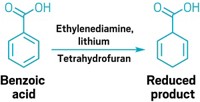Advertisement
Grab your lab coat. Let's get started
Welcome!
Welcome!
Create an account below to get 6 C&EN articles per month, receive newsletters and more - all free.
It seems this is your first time logging in online. Please enter the following information to continue.
As an ACS member you automatically get access to this site. All we need is few more details to create your reading experience.
Not you? Sign in with a different account.
Not you? Sign in with a different account.
ERROR 1
ERROR 1
ERROR 2
ERROR 2
ERROR 2
ERROR 2
ERROR 2
Password and Confirm password must match.
If you have an ACS member number, please enter it here so we can link this account to your membership. (optional)
ERROR 2
ACS values your privacy. By submitting your information, you are gaining access to C&EN and subscribing to our weekly newsletter. We use the information you provide to make your reading experience better, and we will never sell your data to third party members.
C &EN’s article about a refrigerated condenser for rotary evaporators, or rotovaps, describes a useful alternative approach for reducing the use of laboratory dry ice and tap water (Feb. 1, page 22). In a subsequent letter to the editor (C&EN, March 14, page 4), Richard Kjonaas mentions the use of ice as a practical and cheap alternative.
My lab mates and I have also used ice for cooling rotovaps equipped with cold fingers with great efficiency for several years. What’s more, we have found that the addition of sodium chloride (common salt) to the ice improves the cooling efficiency significantly for our use. We have thus routinely been able to remove higher-boiling solvents such as ethyl acetate and cyclohexane at a water bath temperature of 35–40 °C when using the laboratory water aspirator vacuum.
Jacob Mathew
Winston-Salem, N.C.




Join the conversation
Contact the reporter
Submit a Letter to the Editor for publication
Engage with us on Twitter